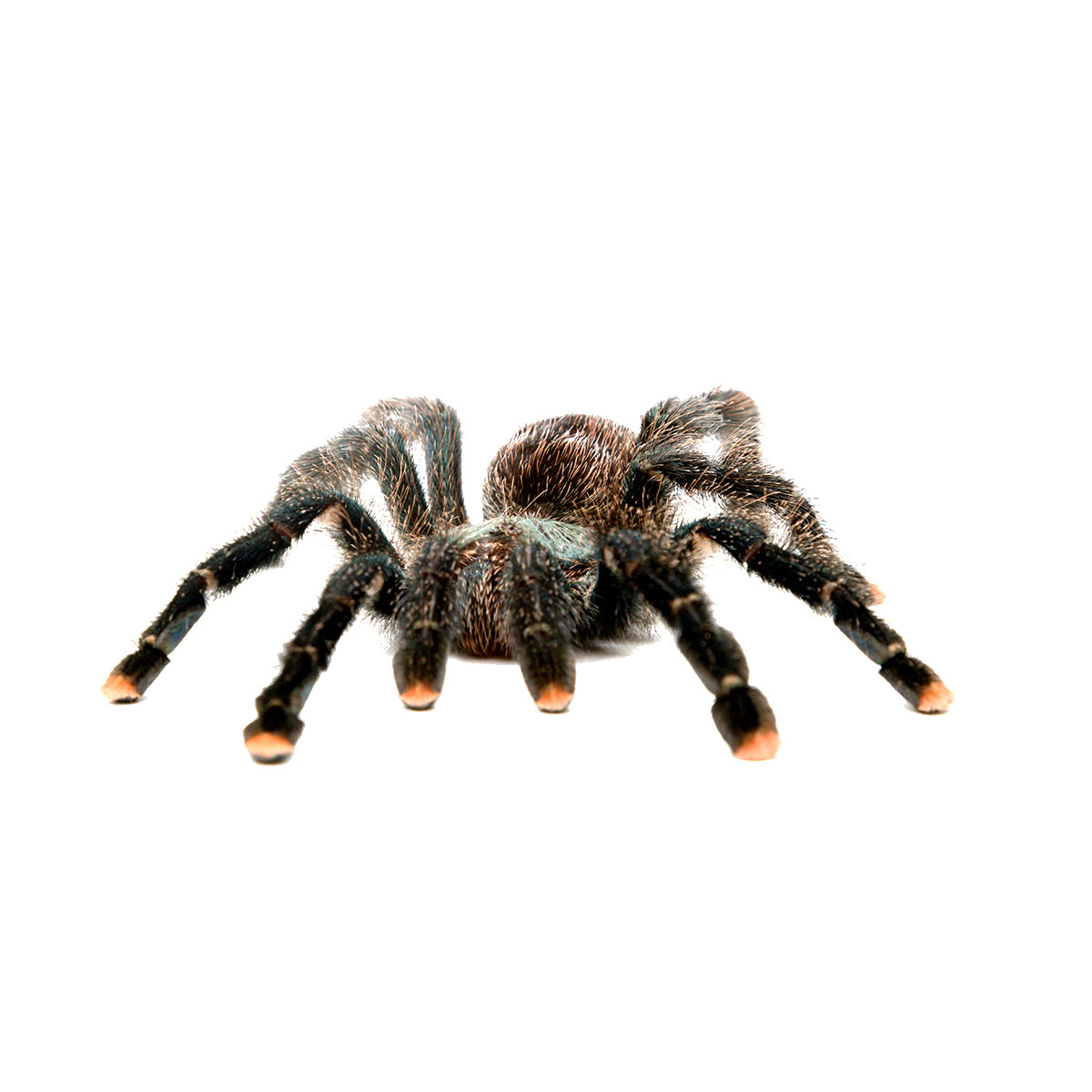Nature is amazing with all the neat creatures you can find. Sometimes, you’ll find some adorable little rodents, sometimes little scaley critters, and sometimes arachnid friends. One that you can find in many different parts of the world is Tarantulas! They aren’t everyone’s favourite creature, but they are incredibly neat and help out our eco-systems in many different ways.
They are highly effective insectivores and help keep the population down for beetles, crickets, grasshoppers, caterpillars, and mosquitos.
Petland carries a wide variety of tarantulas which can include Pink Toes and Mexican Red Knees, contact your local Petland for current availability.
Pink Toe Tarantula
Latin: Avicularia avicularia
Lifespan: Females 10 + years; Males 2-3 years
Origin: Central & South America
Time When Most Active: Night (Nocturnal)
Adult Length: Females 5"; Males 3½"
Suggested Tank Size (for adults): 12x12x18" (Approx. 10 gal)
Substrate Recommendations: Plantation Soil, Jungle mix, Terrarium Moss
Deco Recommendations: Plastic/silk jungle plants – provide a lot of climbing areas. Prefer a woodland/Semi-Tropical habitat.
Foods Offered: Appropriately-sized crickets, worms
General Feeding Frequency: 3 - 4 times a week. Discontinue feeding when coming into a moult, and wait until 2 weeks after a moult to feed (allows exoskeleton to harden)
Ambient Temp: 75 - 82°F
Nighttime Temp: 70 - 75°F
Recommended Humidity: 70 - 80%
Additional Care Requirements: Dechlorinator. Vertical tank as they are arboreal and prefer to have space to climb. Do not use a radiant heat source because it can dry out and harm the tarantula.
Additional Notes: Most Pink Toes are non-aggressive, but can be nervous. If handled properly, are great hand pets. Venom is quite mild, will cause pain and swelling. When startled, will flick irritating hairs – avoid contact with eyes, nose and mouth. As babies they have pink legs with black toes, and as they mature they transition to having black legs with pink toes.

Pink Toe Tarantula
Mexican Red Knee Tarantula
Lifespan: 15 - 25 years
Origin: Mexico and Panama
Adult Length: 4 - 5½"
Suggested Tank Size (for adults): 18x18x24"
Deco Recommendations: Small water dish plus a sponge, medium cave, plastic/silk plants (Sub-Tropical species)
Feeding Frequency: Food offered daily (depending on molt)
Foods Offered (incl size): Cricket's size depends on tarantula's size
Basking Temp: 85°F
Daytime Ambient Temp: 75 - 85°F
Night Time Ambient Temp: 70 - 72°F
Recommended Humidity: 60 - 75%
Misting Frequency: Once every 2 - 3 days
Additional Care Requirements: Do not feed during molt (crickets will kill the tarantula). Will always burrow, preferably inside of pre-constructed shelters.
Additional Notes: Usually quite reasonable and docile, but may become nervous and unpredictable. When startled, will flick irritating hairs - avoid contact with eyes, nose and mouth.

Meican Red Knee Tarantula
Different spider species are allowed in different regions. Please look into your local bylaws and contact your local Petland for availability.
Tarantula Care
Tarantulas’ typical meals include crickets, mealworms, waxworms, cockroaches and pinkie mice between 1-3 times a week, depending on the tarantula species. It is not uncommon for a tarantula to not eat when they are about to moult. Food should not be offered for two weeks post moult, to allow time for the new exoskeleton to harden.
Tarantulas’ habitats vary based on where they originate from. A light substrate to encourage burrowing is important. They do enjoy branches and arboreal-themed decor for climbing. Housing for these critters depends on size of tarantula as smaller slings require a smaller enclosure to ensure they are not escaping, while larger tarantulas benefit from having a 10–20-gallon tank. Because each tarantula has a specific temperature need and humidity, please refer to the Caring For Your Tarantula tip sheet for more information.
Fun Tarantula Facts!



